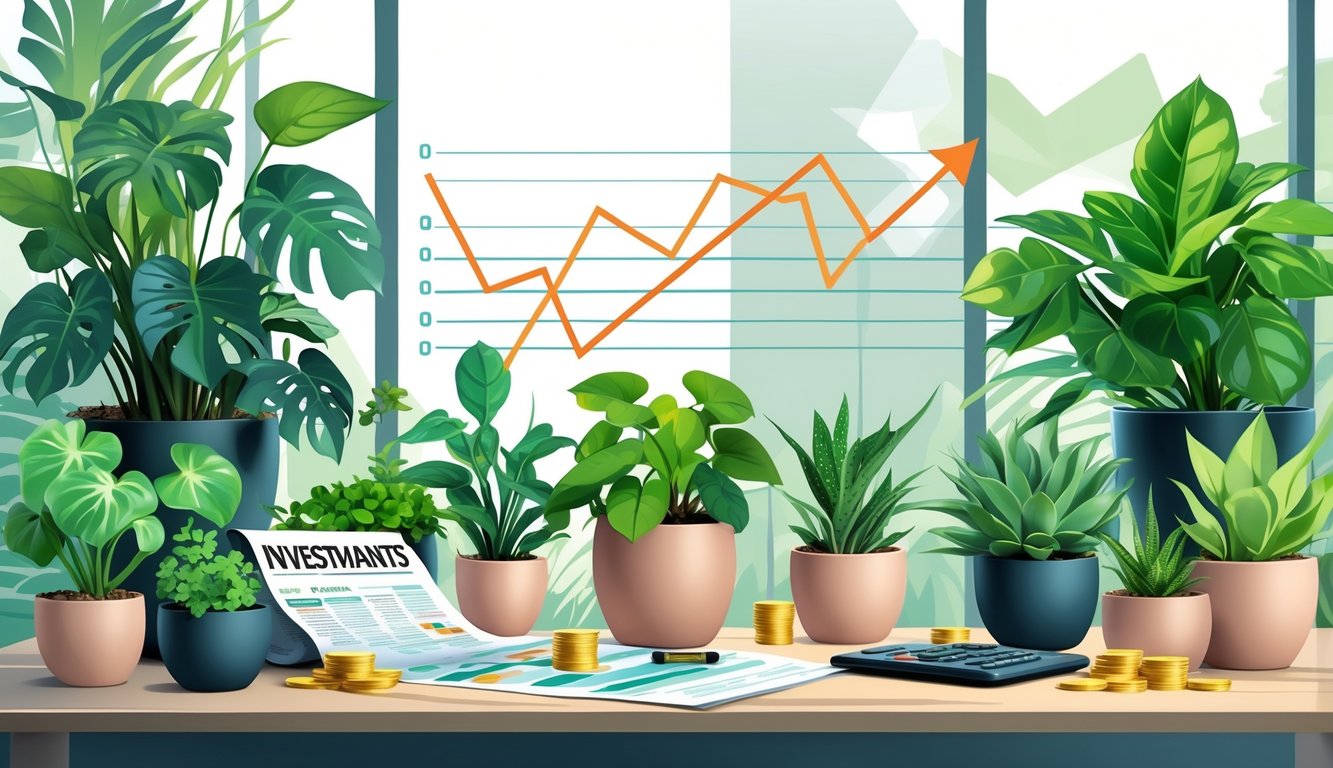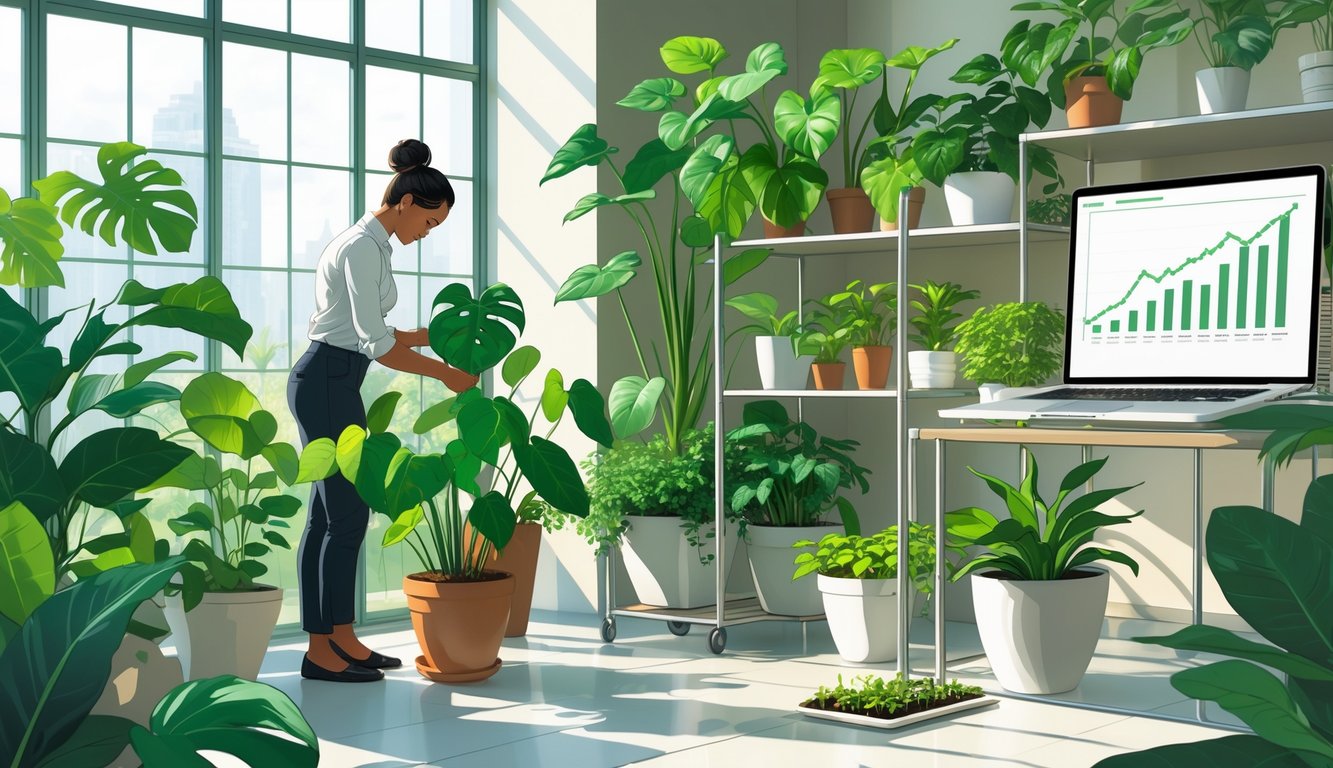
Maximizing Returns: Plant Care and Propagation

Honestly, keeping these things alive is the hardest part. Rare houseplants? Not so much “investment” as “countdown to failure” if you slack on care. I missed watering by two days—$200 cutting, gone. Propagation? Sometimes a Monstera cutting pays rent, sometimes it just melts. I’ve drowned more nodes than I want to admit.
Best Practices for Plant Health
Plants don’t care about your vibes—they want humidity numbers, airflow, and that impossible “bright indirect light” tag. Someone swore by tower fans in an auction group. Tried it. Fewer rotting Calatheas, so maybe it works?
Fertilizer wars are real. I use quarter-strength balanced stuff every third watering. Not fancy, but it works. Neglect salts or burn roots, and your rare plant graveyard grows. Spider mites, thrips—they show up right after you brag about how healthy your plants are. Neem oil, predatory mites, quarantining every new plant for three weeks? Not overkill. It’s just survival.
Propagation Through Cuttings
If one more person says “just stick it in water,” I’ll lose it. High success rates need sharp shears, alcohol wipes, and nodes that aren’t on death’s door. My friend tried using only bottom leaves—didn’t root, just rotted. I get best results with 10-15 cm cuttings, node under water, fresh jar, don’t crowd. Roots show up in two weeks, or three months, or not at all.
Some rare stuff won’t root in water but loves sphagnum moss. Selling cuttings? Size is everything—a 10 cm rooted Monstera adansonii cutting brings triple the money compared to a sad little 5 cm one. Cutting swaps are risky if you don’t trust the source. Learned that the hard way with an aphid-infested Hoya.
Maintaining Variegation and Rarity
The idea that all cuttings stay variegated? Total myth. Grafted chimeras love reverting to green, and people drop hundreds chasing a “half moon.” I check every new leaf, and snip any solid green. It’s a losing battle, but selective pruning helps.
Genetic drift is a thing. I always take cuttings from the most stable plant, not the weirdest one. Distilled water only, no all-purpose fertilizer. Social media raves about tissue culture, but who has a lab at home? Scarcity is a joke anyway—one bulk drop of rare plants tanks prices, and everyone bails. Me too.
Eco-Friendly and Sustainable Investment Choices
Traded a stock last week—crashed. My variegated monstera? Refused to grow. The rare plant world is all drama and eco-guilt, but also, weirdly, about green profit (in both ways).
Ethical Sourcing of Rare Plants
So, importing a Philodendron spiritus-sancti for the ‘gram, then realizing wild populations are tanking. Auctions are full of cuttings with “iffy” paperwork. Royal Botanic Gardens says nearly 40% of rare plants are heading for extinction, but Instagram sellers? Never mention CITES or legal anything. Sketchy.
Some collectors claim nurseries “propagate responsibly,” but where’s the proof? I always bug vendors for provenance—only a few, like NSE Tropicals or botanic garden programs, ever show real certification. I ask for tissue culture or propagation records, and mostly get ghosted. So, yeah, pester them, because your next staghorn might be greenhouse-grown or, uh, smuggled.
And the greenwashing—don’t get me started. Everyone slaps “eco-friendly” on their site, but unless they say which mother plant or how they actually do “sustainable,” I don’t buy it. Sometimes I just swap with friends. Not a business, but at least I sleep okay.
The Role of Sustainability in Plant Investing
Everyone says they care about the planet, but most collectors just want rare anthuriums for the likes. Sustainability in plant investing? Nobody talks about it unless you ask. Green investment is up—$2.1 trillion in 2024 on green tech—but does anyone track rare indoor plants? Doubt it. “Closed-loop cultivation” sounds good, but what about all the coco coir and plastic pots piling up in my closet?
Pro growers say vertical farms save water, run on LEDs. Cool. But nobody talks about the carbon cost of flying plants from Ecuador. Want to do better? Invest in nurseries with real sustainability audits. Skip wild-collected stock unless you like customs drama. Honestly, check for boring supply chain certifications, even if the plant’s ugly.
A guide to eco-friendly investing says to monitor every ethical investment for compliance. I try: track water use, inputs, even worker pay (good luck finding that info). Anyone bragging about “low-impact” plants with zero sourcing details? Not worth your money. Or your windowsill.